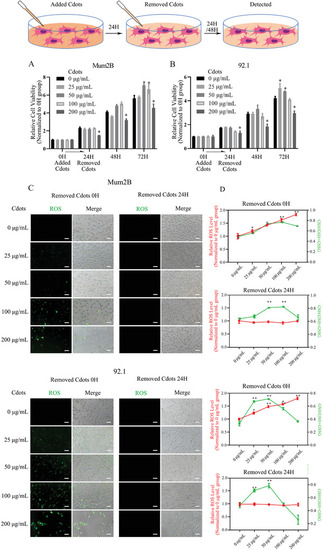Figure 2
- ID
- ZDB-FIG-210428-72
- Publication
- Ding et al., 2021 - Dose-Dependent Carbon-Dot-Induced ROS Promote Uveal Melanoma Cell Tumorigenicity via Activation of mTOR Signaling and Glutamine Metabolism
- Other Figures
- All Figure Page
- Back to All Figure Page
|
Cdots promote UM cell viability, ROS generation, and redox state balance. A,B) CCK‐8 assay results. Mum2B and 92.1 UM cells were cultured with Cdots for 24 h, Cdots were removed from the media, and the cells were cultured for another 48 h. After the 72 h period, Cdots at 50 and 100 µg mL−1 promoted Mum2B cell viability, and Cdots at 25 and 50 µg mL−1 promoted 92.1 cell viability. The results were compared to viability at time zero. C) Bright‐field and fluorescence images showing ROS levels in Cdot‐treated UM cells using a DCFH‐DA assay ( |

